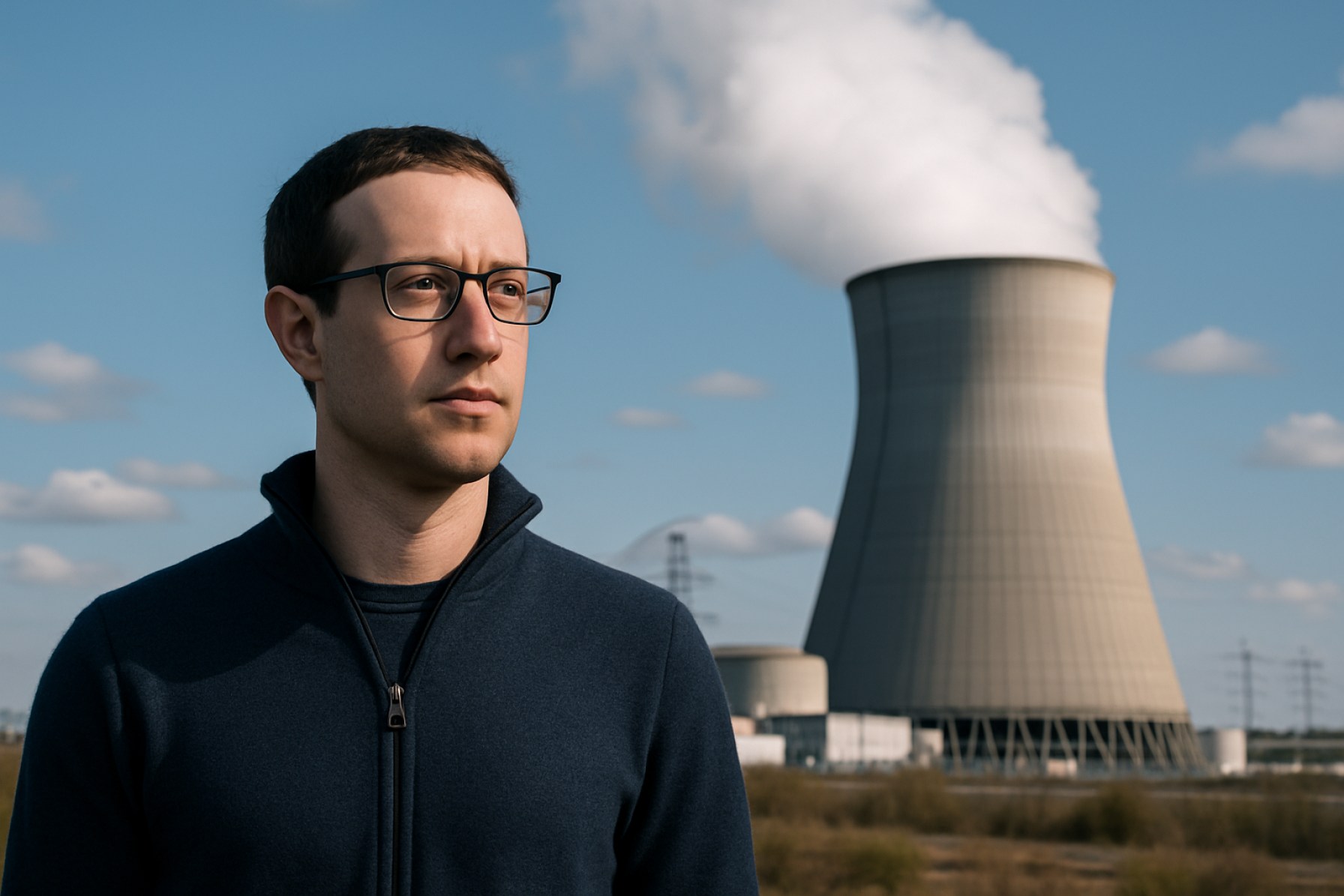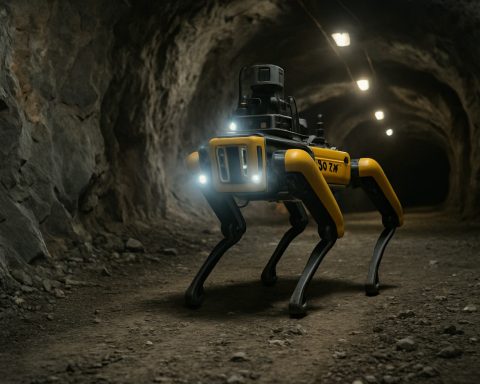Meta’s 20-Year Nuclear Power Play: Why the World’s Biggest Tech Giants Are Betting on Thermal Energy Storage for the AI Age
Meta’s nuclear deal is transforming clean energy, positioning thermal storage as the critical missing link for a resilient, AI-powered grid.
- 1.1 GW: Mega power purchase by Meta from Constellation’s Clinton Clean Energy Center, Illinois.
- 400+ TWh: Predicted annual U.S. energy demand from AI by 2030.
- 550 metric tons: CO2 cut yearly by one bGen™ system at a single college campus.
- 20 years: Duration of Meta’s historic clean energy commitment.
The energy world just witnessed a seismic shift. Meta’s massive, 20-year deal to buy 1.1 gigawatts of nuclear energy from Constellation’s Clinton Clean Energy Center is making headlines worldwide. Not only does this agreement save a crucial zero-emissions reactor from the brink of closure—it marks the dawn of a new energy era dominated by Big Tech, artificial intelligence, and smart infrastructure.
What’s really at stake? The future of energy grids powering billions of devices, data centers, and next-gen AI—where flexibility, stability, and sustainability are non-negotiable. It’s a race for control, and the winners will be those who go beyond simply producing clean energy.
Q: Why Was Meta’s Nuclear Move So Game-Changing?
Traditional nuclear plants were engineered for the last century. They thrive on stability—pump out continuous electricity 24/7, no questions asked. But 2025’s world is very different, driven by spiking, unpredictable power needs from streaming, digital currencies, and most notably, colossal AI workloads.
Meta’s headline-grabbing contract isn’t just about buying energy—it’s about guaranteeing always-on, stable power so their sprawling data centers never miss a beat. Amid a global push for greener grids and skyrocketing AI demand, this is setting a powerful precedent for everyone from Microsoft to Amazon and Google.
Q: What’s the Problem With Old-School Nuclear Plants for Modern Grids?
Today’s grids see wild swings in demand—one minute, every server is idling; the next, AI is chewing through petabytes in an instant. Nuclear’s old playbook can’t keep up with this volatility. While nuclear excels at reliable baseload, it struggles to adjust dynamically—a must in the digital age.
Throw in the growing mix of wind, solar, and off-grid microgrids around the globe, and it’s clear: clean energy alone won’t cut it unless it’s flexible, managed, and ready for 21st-century challenges. Otherwise, risks of region-wide blackouts—like those in the Iberian Peninsula—could surge.
- Modern manufacturers are electrifying everything, aiming to ditch fossil fuels and stabilize costs.
- Countries are racing to decentralize their grids with off-grid, island mode projects.
- Growing renewables require precise balancing to prevent outages.
How Is Thermal Energy Storage Changing the Game?
Enter Brenmiller Energy’s bGen™ platform—a breakthrough thermal energy storage (TES) system gaining momentum across Europe, Israel, and the U.S. Their technology captures cheap excess electricity, stores it as heat in rocks, and discharges energy on demand, whether that’s as steam, hot air, or hot water.
Paired with nuclear plants, thermal storage transforms steady, inflexible output into versatile, dispatchable energy. This combo lets nuclear not only keep the lights on but also ramp up or scale down power when the grid needs it most—24/7/365.
It’s not just theory. Brenmiller’s solutions are already shrinking carbon footprints, balancing renewables, and powering off-grid hydrogen projects. In fact, TIME Magazine crowned bGen™ one of the Best Inventions in Green Energy in 2023, and it recently won Gold at the 2025 Edison Awards.
Q: Why Does Big Tech Care About Nuclear + Storage?
Tech giants aren’t just environmental flag-bearers—they’re pragmatists. Their AI systems demand energy with relentless persistence. U.S. utilities forecast that by 2030, AI alone could guzzle more than 400 terawatt-hours every year.
Wind, solar, and incentives won’t guarantee reliable 24/7 power. Big Tech’s answer? Combine the certainty of nuclear with the responsiveness of advanced storage. Microsoft, Amazon, and Google are lining up behind nuclear, betting this pairing will be the only way to run tomorrow’s AI factories non-stop, without fossil fuels.
How Do Storage Solutions Like bGen™ Power the Next Energy Wave?
The genius of bGen™ is its modularity and speed. Utility providers and large industries can install these thermal batteries and immediately start converting grid fluctuations or excess renewable electricity into usable heat or steam—cost-competitive and carbon-free.
Brenmiller’s gigafactory for thermal battery production, the first of its kind, is slashing deployment times across the globe—giving real teeth to net-zero pledges and grid resilience. The bGen™ platform not only extends the life of legacy nuclear plants but also readies the grid for new developments like small modular reactors (SMRs).
With SMRs on the policy horizon—President Trump’s recent executive orders favoring fast SMR approvals and domestic fuel—experts say storage will be vital for letting even modern reactors adapt to surging, minute-by-minute power needs.
How Can Energy Buyers Future-Proof Their Infrastructure?
- Assess dynamic vs. static energy demand: Don’t just buy power—buy flexibility.
- Pair carbon-free generation (like nuclear) with modular storage tech.
- Stay ahead of policy trends supporting SMRs and grid modernization.
- Turn to proven, scalable platforms—TIMEs and Edison Awards recognize real innovation.
Leaders in industry and government now recognize: without adaptive storage, even the cleanest baseload is a liability. But paired with innovations like bGen™, nuclear becomes the backbone of an AI-ready, green, and reliable grid.
What’s Next for Global Energy—and How Can You Take Action?
The nuclear comeback is real—and happening now. But the smartest players are already looking past raw generation, investing in flexible infrastructure to unlock true grid value.
From new off-grid solutions to utility-scale hybrid systems, watch for rapid acceleration in projects blending nuclear with innovative storage. If you want to power the AI age, you’ll need more than hope and solar panels—you’ll need flexibility, certainty, and the right partners.
Ready to future-proof your operations? Take these steps now:
- Audit your long-term power needs for volatility and AI-driven spikes.
- Explore hybrid nuclear + storage partnerships for your region or industry.
- Follow leaders like Brenmiller Energy for real-world advances.
- Monitor trends at U.S. Department of Energy and leading global energy bodies.
The energy revolution is here—don’t get left in the dark. Invest in storage, unlock true nuclear potential, and power the future, starting today.












